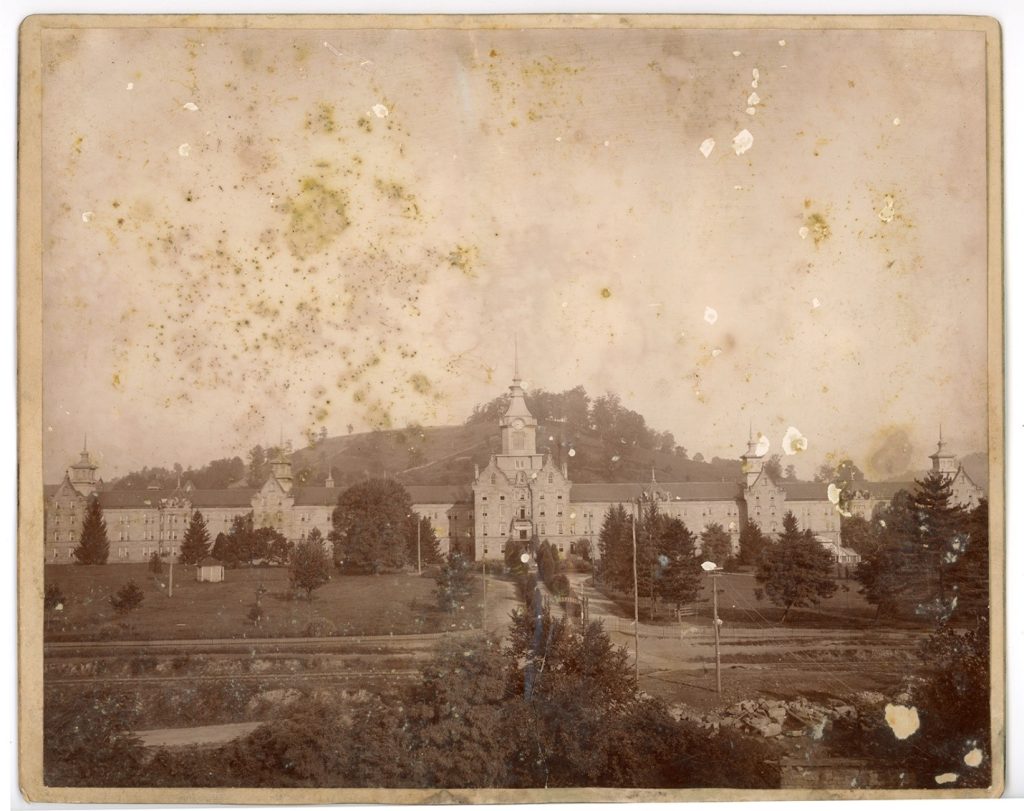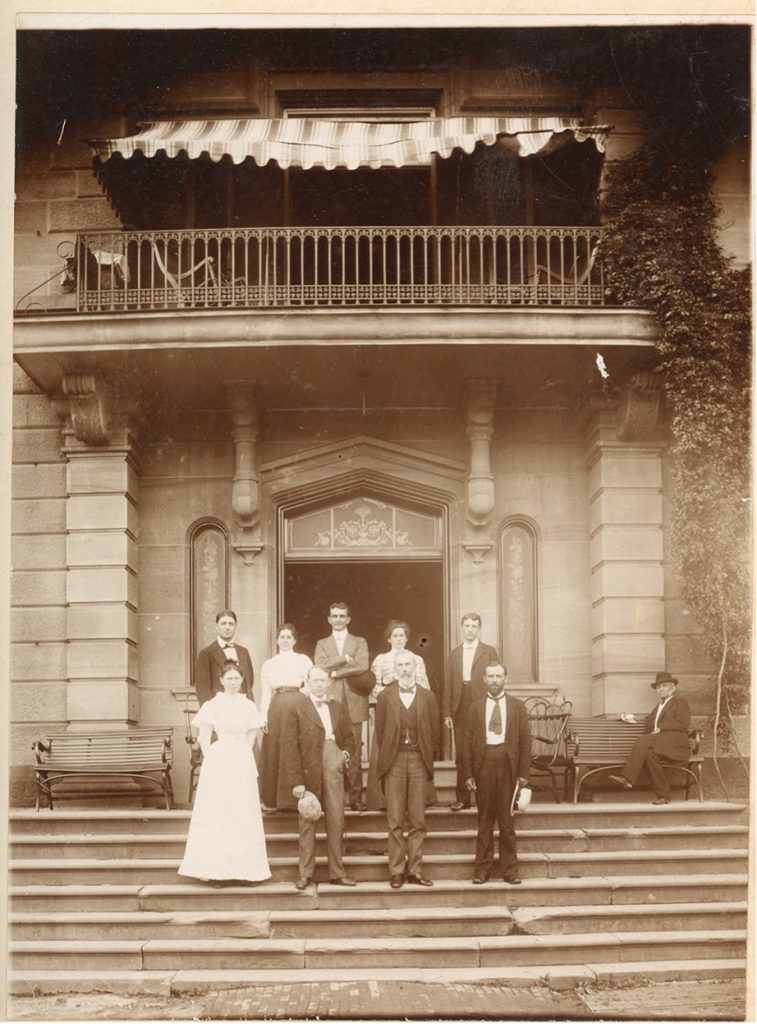Lorilla Bullard: Doctor to Insane Women
Posted by Mary Alvarez.January 8th, 2024
Written by Linda Blake
If you are a native West Virginian, as I am, you will have heard the jokes about being “sent to Weston” or “coming from Weston.” Everyone knew the Weston reference was to the Weston State Hospital. Like many people living in Weston, my aunt worked at the hospital. I have visited the hospital as a tourist many times since it became the Trans-Allegheny Lunatic Asylum, but my first visit was in the 1970s when I was an education major at Glenville State College. We made a class visit to the Weston State Hospital and to a hospital in St. Mary’s, West Virginia, to see special needs populations. The memories of those visits have stayed with me some fifty years later.


A new acquisition to the West Virginia and Regional History Center, “Lorilla Frances Bullard Tower, Doctor, Papers,” sheds light on the history of the Weston State Hospital, or as it was known when Dr. Lorilla Bullard was an Assistant Physician there, the West Virginia Hospital for the Insane. Dr. Bullard provided medical services to mentally ill women during the late 19th and early 20th centuries. Her papers consist largely of photographs of the hospital, staff, and patients; correspondence regarding the employment of Dr. Bullard at the hospital; and papers on the treatment of the mentally ill at the turn of the 20th century. This blog post will highlight just a few of the most interesting papers.

The Weston State Hospital
First, a bit of history of this state institution created to treat mentally ill patients who over the years were officially called “insane” and “lunatic,” the latter by the 1858 Virginia Legislature when it passed a law authorizing the start of building “The Lunatic Asylum West of the Alleghany Mountains.” Upon its completion and after West Virginia became a state in 1863, the hospital was named the West Virginia Hospital for the Insane which is the name of the hospital discussed in Dr. Bullard’s Paper, 1894-1904. Patients who originally resided in West Virginia but who were living in Virginia’s Western Hospital in Staunton were transferred to the new hospital in Weston. In 1913 the name was changed to the Weston State Hospital which remained its name until its closing in 1994. The current hospital called The Trans-Alleghany Lunatic Asylum is a tourist attraction with some parts open to the public. The building and grounds are monumental and of historical and architectural significance and the building and museum are well worth a visit.

Dr. Lorilla Bullard
Lorilla Frances Bullard was born in Wheeling, West Virginia, on March 15, 1870. She and her sister Rachel both attended the Woman’s Medical College of Pennsylvania in Philadelphia. After graduating, she moved in Oakland, Maryland where she settled for the rest of her life when she left the West Virginia Hospital for the Insane in Weston.
She worked in Weston as one of two Assistant Physicians, 1896-1901. After serving a five-year term, Bullard requested another term. Her papers indicate that her bid for reappointment in 1901 was contentious with indications that it was because she was a woman. Letters of support for her reappointment came from West Virginia movers and shakers including the West Virginia State Medical Society, government administrators, state legislators, and other leaders of the Republican Party. Many of the letters express not just Dr. Bullard’s qualifications, but the efficacy of women being treated by women. A.B. White, President and Editor of The State Journal wrote:
“A physician of her own sex is no longer denied in many progressive states to the unfortunates whose mental conditions require treatment at the asylum and no one better than a skillful woman could treat a woman thus afflicted. The very nature and condition of patients in many cases implies the need for women attendants of skillful hands and through medical training. Dr. Bullard meets these requirements admirably and I commend her to your most favorable consideration.”
J.K. Hall wrote of Dr. Bullard “…she stands high in her profession, has met with marked success at your institution, and is in every way deserving of re-appointment.”
At about this time, 1902, Dr. Bullard married Edward Zealous Tower in Lewis County. The couple moved back to Maryland after she was not being reappointed at the West Virginia Hospital for the Insane. In Maryland. she was very active in local causes, including child welfare and the voting rights of women. She continued to be a licensed physician, but did not practice extensively, but she did work with the Red Cross and other civic groups until her death in 1963. According to one source, she was the only female doctor listed in Garret County in 1922. Dr. Tower was recognized in 2020 as a Maryland (Garret County) suffragist for “her work to empower women for social reform and suffrage.”
Superintendent’s Scandal
Dr. Bullard’s papers overall are fascinating and a great addition to the knowledge we have regarding the history of the State Hospital and the treatment of mental illness, specifically of women. Some items in the collection which may be of special interest to researchers include a letter from a lawyer detailing the legalities of women doctors for the insane, photographs of the inner workings of the huge building, notes on the treatment of four women, and photographs of Black patients and workers.
I found one item particularly intriguing: the January 23, 1900 edition of the Weston Independent newspaper with an article regarding the Hospital’s Board hearing on the termination of Dr. W.E. Stathers as the Superintendent at the Hospital. He was charged with inappropriate relationships with women, both patients and staff. An August 19, 1899 newspaper article now online provides background details of accusations against Dr. Stathers as well as testimony discrediting witnesses. Dr. Bullard was mentioned as caring for Harriet Green, one of Stathers’ accusers, and testified regarding Harriet Green’s attempted suicide and to rumors about Green and Stathers. After the hearing, the Board did not dismiss Stathers, but according to the 1900 newspaper article included in the collection, various newspapers and the general public lobbied for Stathers’ dismissal. He finally did resign in 1901, which to some was an admission of guilt, but the Board was slow to find a replacement. An editorial in The Argus called Stathers “the old reprobate.” Another newspaper editorial in the Farmers Advocate said the Board’s reluctance to dismiss Stathers and its subsequent inability for months to hire a replacement was “a disgrace intolerable.”
So, Dr. W.E. Stathers kept his job after abusing his position of power over women in his employ and women disabled by mental illness. Conversely, Dr. Lorilla Bullard, who cared for the health needs of those same mentally ill women, was not allowed to keep her job. Could it have been because she was a woman practicing in a male-dominated profession?
To see the photographs, correspondence, and other papers of Dr. Lorilla Bullard, make an appointment to visit the West Virginia and Regional History Center.







January 20th, 2024 at 1:30 pm
Great job! We included a brief profile of Lorilla Bullard Tower in an August 2023 publication called Remarkable Women: Shaping the Community and Economic Development of Garrett County, MD.
Beverly Railey Robinson
Hazelton, WV.